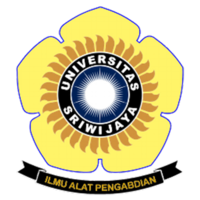Optimalisasi Lahan Kering Melalui Pemupukan Limbah Ternak pada Bawang Merah (Allium ascalonicum L.)
Abstract
Hewayanti E, Palmasari B. 2019. Optimization of dry land through fertilizing animal waste on the shallots (Allium ascalonicum L.). In: Herlinda S et al. (Eds.), Prosiding Seminar Nasional Lahan Suboptimal 2019, Palembang 4-5 September 2019. pp. 445-451. Palembang: Unsri Press.
Dry land is one of the suboptimal land, but it has relatively good prospect to be used as agricultural land, especially onion plants, but production is still low, therefore one of the efforts that can be done with the application of livestock waste fertilizer. This study aims to obtain the best type of compost from manure waste at various levels of chemical fertilization on the growth and production of shallot plants (Allium ascalonicum L.). This research has been carried out on farmer's land located on Sukarela road, Kelurahan Kebun Bunga, Kec. Sukarami, Km 7 Palembang South Sumatra. This research was conducted from April to July 2018. This study used a Split-plot design consisting of 12 treatment combinations and 3 replications. As the main plot of compost (K) treatment: K1 = compost of chicken manure waste; K2= compost of cow dung waste; K3 = goat manure waste compost and treatment of subplots chemical fertilization rate (N): N = 0% fertilization dose; N1= 25% fertilizer dose; N2= 50% fertilizer dose; N3= 75% fertilizer dose. The observational variables in this study include: plant height (cm), number of tubers per clump (tuber) and tuber weight per clump (g). The results showed that a combination of chicken manure (10 tons/ha) and chemical fertilizer with 75% (urea 150 kg/ha, SP36 225 kg/ha and KCl 150 kg/ha) from the recommended dosage gave the best growth and production on shallot plants with bulb production of 2.67 g/m2 or 13.35 tons/ha.
Dry land is one of the suboptimal land, but it has relatively good prospect to be used as agricultural land, especially onion plants, but production is still low, therefore one of the efforts that can be done with the application of livestock waste fertilizer. This study aims to obtain the best type of compost from manure waste at various levels of chemical fertilization on the growth and production of shallot plants (Allium ascalonicum L.). This research has been carried out on farmer's land located on Sukarela road, Kelurahan Kebun Bunga, Kec. Sukarami, Km 7 Palembang South Sumatra. This research was conducted from April to July 2018. This study used a Split-plot design consisting of 12 treatment combinations and 3 replications. As the main plot of compost (K) treatment: K1 = compost of chicken manure waste; K2= compost of cow dung waste; K3 = goat manure waste compost and treatment of subplots chemical fertilization rate (N): N = 0% fertilization dose; N1= 25% fertilizer dose; N2= 50% fertilizer dose; N3= 75% fertilizer dose. The observational variables in this study include: plant height (cm), number of tubers per clump (tuber) and tuber weight per clump (g). The results showed that a combination of chicken manure (10 tons/ha) and chemical fertilizer with 75% (urea 150 kg/ha, SP36 225 kg/ha and KCl 150 kg/ha) from the recommended dosage gave the best growth and production on shallot plants with bulb production of 2.67 g/m2 or 13.35 tons/ha.
Keywords: chemical fertilization, compost animal manure, shallots
Full Text:
PDFArticle Metrics
Abstract view : 310 timesPDF - 588 times
Refbacks
- There are currently no refbacks.

